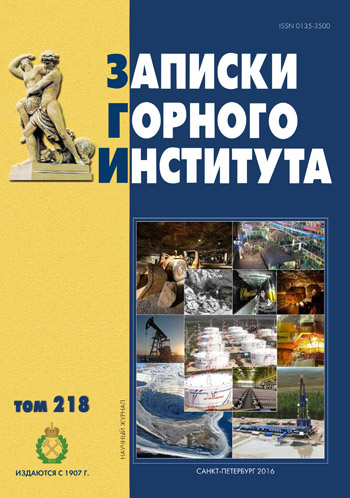Analysis of charge space distribution influence on electric adhesion forces
- Ph.D., Dr.Sci. professor Saint-Petersburg Mining University
Abstract
Modeling ideas of physical and chemical processes when using an anodic bonding for materials connection are developed. The kinetics of a charge accumulation in an electrode region in a dielectric is considered. The thickness of a charge layer, electric fields strength and value of the ponderomotive pressure providing connection of materials are calculated. It is shown that the necessary ponderomotive pressure resulting in a dielectric-to-conductor seal is normally about ten megapascal and the time required is about ten minutes. The appearance of great pulling electric fields at anodic bonding process with a conductor surface to dielectric turns out to be possible due to the interlayer polarization developing in dielectric under the action of electric voltage. This results in a negative charge accumulation in a layer of small thickness beside anode. Thus applied electric voltage is distributed not through the whole thickness of a dielectric, but in fact is applied to a narrow area of the three-dimensional charge be-side anode. Arising strong electric fields force the connected materials to unite. The physical and mathematical models for force characteristics of non-uniform electric field are developed. Dependences of parameters of anodic bonding junction on time are considered. The expressions allowing to choose well-founded time of formation of anodic bonding junction are obtained, intensity of electrostatic fields and forces in dynamics is calculated. Research of a charge intermittence influence on electrostatic field strength has shown a considerable differences on small distances to the charged surface between carried out and traditional ways of calculation.
